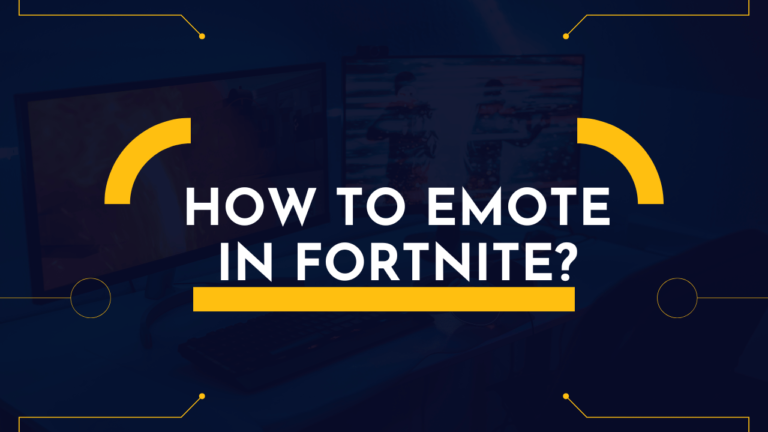How to Optimize Your Mobile Game for Performance and Speed

Mobile gaming is now a global phenomenon after undergoing a seismic shift in recent years which transformed it from being just a casual pastime.
The rise in mobile gaming has changed the interactive entertainment landscape by allowing millions of player to access immersive gaming experiences from the convenience of their smartphones.
This evolution of mobile gaming proved to be a testament to both, technological innovation and human creativity.
The journey of mobile gaming started with simple games like Snake and Tetris. But as time marched on, mobile devices became powerful and gameplay experiences became more intricate.
However, one thing remains constant which is the need and demand for speed and performance in mobile games.
As mobile games transformed into being more advanced, the expectations of gamers elevated into seeking seamless gameplay and rapid loading times.
Now, to meet these lofty expectations, you’ll need to hire the best mobile app development company to fine-tune your games for optimal performance.
In this article, we’ll provide you with insights on how you can optimize your mobile game in the domains of performance and speed that can offer gamers a delightful experience.
So let’s get started without any further ado!
Table of Contents
Choose the Right Game Engine for Performance
Selecting the optimal game engine is paramount; it sets the stage for maximizing your mobile game’s performance and speed. Make an informed choice based on your game’s requirements and engine capabilities.
Here is how you can choose the right game engine for performance:
Evaluate Your Game’s Requirements
Begin by assessing the specific requirements of your mobile game. Consider factors like the game’s genre, graphics complexity, and intended platform (iOS, Android, etc.). These insights will help you identify the engine that aligns best with your project.
Research Game Engines
Research and compare various game engines available in the market. Popular choices include Unity, Unreal Engine, Godot, and Cocos2d. Each engine has its strengths and weaknesses, so make sure to read reviews, study documentation, and consider community support.
Performance-Focused Features
Look for game engines that prioritize performance optimization features. These can include built-in tools for asset optimization, rendering optimizations, and scalability to ensure your game runs smoothly across a range of devices.
Cross-Platform Compatibility
If you plan to release your game on multiple platforms, choose an engine that supports cross-platform development. This reduces the need for separate codebases and streamlines the optimization process.
Benchmark and Testing
Perform benchmark tests with the engines you’re considering. Create small prototypes or test projects to gauge how each engine handles the specific demands of your game. This hands-on testing can reveal potential performance bottlenecks.
Community and Resources
Consider the strength of the engine’s community and the availability of resources, including forums, tutorials, and plugins. A vibrant community can be invaluable when troubleshooting performance issues.
Optimize Graphics and Visual Effects
Enhance your mobile game’s performance by optimizing graphics and visual effects. Streamline assets and make smart use of resources for a smoother gaming experience.
Here is how you can optimize graphics and visual effects for your mobile game:
Prioritize Efficient Asset Compression
Compress your game’s textures, images, and videos to reduce file sizes while maintaining visual quality. Use formats like WebP or PVRTC for mobile devices to save memory and boost loading times.
Implement Level of Detail (LOD) Techniques
Employ LOD strategies to adjust the level of detail in 3D models based on their distance from the player’s view. This reduces GPU workload and enhances rendering performance.
Streamline Shader Complexity
Simplify shaders and materials, minimizing unnecessary visual effects. Striking a balance between aesthetics and performance is crucial for a smoother gaming experience.
Optimize Texture Atlases
Combine multiple textures into atlases to reduce draw calls and texture swaps, which can improve rendering speed significantly.
Use Sprite Sheets for 2D Games
Create sprite sheets to efficiently manage 2D game assets. This reduces memory usage and allows for quicker rendering of sprites.
Limit the Use of Real-Time Lighting
Real-time lighting can be resource-intensive. Consider using baked or pre-calculated lighting solutions for static scenes to enhance performance.
You can achieve all of these traits in your gaming app if you partner up with a reliable game app development company. However, do your research first to check if the company has previously worked on similar projects.
Streamline Code and Reducing CPU Load
Boost your mobile game’s speed and performance by streamlining your code and reducing CPU load. Optimize loops and minimize garbage collection for smoother gameplay.
Here is how you can streamline your code and reduce CPU load in your mobile game:
Optimize Loops and Iterations
Minimize unnecessary loops and iterations in your code to reduce CPU processing overhead. Use efficient algorithms and data structures for tasks like collision detection and pathfinding.
Implement Object Pooling
Utilize object pooling techniques to reuse and recycle game objects, such as bullets or enemies. This reduces memory allocation and the associated CPU load.
Reduce Garbage Collection
Minimize object instantiation and destruction during gameplay to limit the frequency of garbage collection, which can cause performance hiccups.
Use Asynchronous Tasks
Offload non-essential tasks, such as asset loading or network requests, to separate threads or coroutines to prevent CPU bottlenecks.
Avoid Heavy Scripting
Limit the use of heavy scripting languages and focus on optimizing critical gameplay scripts. Use native code or highly optimized scripting languages when necessary.
Implement Caching and Asset Loading Techniques
Supercharge your mobile game’s speed and performance by mastering caching and asset-loading techniques. Efficiently manage assets and minimize load times for a seamless gaming experience.
Here is how you can implement caching and asset-loading techniques in your mobile game:
Utilize Texture and Asset Atlases
Combine multiple textures and assets into atlases to reduce the number of loading operations, optimizing memory usage and speeding up asset loading.
Prefetch Critical Assets
Identify essential game assets, such as character models or level data, and load them in advance during loading screens to minimize in-game delays.
Implement Level Streaming
Use level streaming techniques to load and unload game levels or sections dynamically, reducing memory overhead and improving load times.
Asset Bundles
Organize assets into bundles based on usage scenarios. Load only the required bundles during gameplay to prevent unnecessary asset loading.
Cache Frequently Used Assets
Cache frequently used assets in memory to avoid redundant loading. Be mindful of memory constraints and manage the cache efficiently.
Lazy Loading
Load assets on-demand as the player progresses through the game rather than preloading everything at the start. This minimizes initial load times.
Continuous Optimization: Post-launch Strategies
Post-launch success demands a commitment to continuous optimization. Stay responsive to player feedback and roll out updates that enhance performance, ensuring your mobile game remains at peak speed and excellence.
Here is how you can continuously optimize your mobile game app:
Gather User Feedback
Encourage players to provide feedback within the game. Analyze their comments and suggestions to identify performance issues and prioritize optimizations.
Regularly Update Your Game
Release regular updates that not only add content but also include performance enhancements and bug fixes based on player feedback and ongoing testing.
Monitor Analytics
Continuously monitor player behavior and performance metrics using analytics tools. Identify trends, bottlenecks, and areas for improvement.
A/B Testing
Implement A/B testing to compare different game versions with performance tweaks. This data-driven approach can help you make informed decisions about optimizations.
Optimize Marketing Assets
Streamline promotional assets such as videos, images, and app store listings to reduce load times for potential players during the acquisition phase.


![MoonLighter Cheats & Unlimited Glitch [PS4, Switch, Xbox One]](https://www.gamesitehub.com/wp-content/uploads/2022/02/moonlighter.jpg)
![Word Cookies Cherry Special Level Answers [Unbelievable]](https://www.gamesitehub.com/wp-content/uploads/2022/03/word-cookies.jpg)

